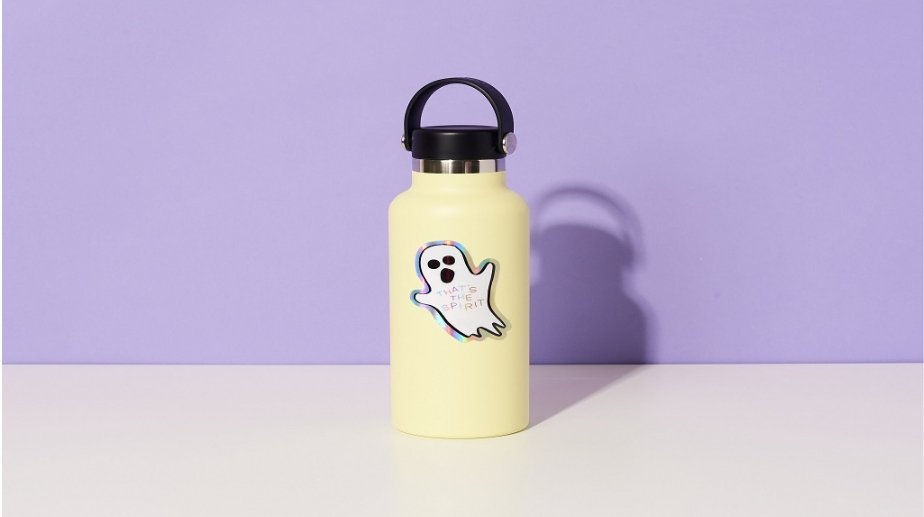Holographic stickers are a popular choice for adding flair and security features to products and documents. A crucial component of these stickers is the adhesive used to affix them securely to various surfaces. Understanding the type of adhesive employed in these stickers is essential for appreciating their functionality and durability.
- Importance of Adhesive
- Pressure-Sensitive Adhesives
- Acrylic Adhesives
- Hot Melt Adhesives
- Solvent-Based Adhesives
- Water-Based Adhesives
- Silicone Adhesives
- Rubber-Based Adhesives
- UV-Curable Adhesives
- Modified Acrylic Adhesives
- Epoxy Adhesives
- Polyurethane Adhesives
- Phenolic Adhesives
- PVA Adhesives
- EVA Adhesives
- Anaerobic Adhesives
- Polyimide Adhesives
- Conclusion
Importance of Adhesive
The adhesive used in holographic stickers plays a pivotal role in their performance and longevity. It determines how well the sticker adheres to different surfaces, its resistance to environmental factors such as moisture and temperature changes, and its ability to maintain the holographic film’s integrity over time.
Pressure-Sensitive Adhesives
Pressure-sensitive adhesives (PSAs) are widely used in holographic stickers due to their ease of application and strong initial tack. These adhesives form an instant bond when pressure is applied and are versatile enough to adhere well to various substrates, making them ideal for these stickers intended for diverse applications.
Acrylic Adhesives
Acrylic adhesives are known for their excellent weather resistance and durability. They provide a strong bond and are resistant to UV radiation, which helps maintain the vibrant colors and holographic effects of the stickers even when exposed to sunlight over extended periods.
Hot Melt Adhesives
Hot melt adhesives are thermoplastic materials that melt and flow when heated, solidifying upon cooling to form a strong bond. They are often used in automated sticker application processes due to their rapid setting time and good initial tack.
Solvent-Based Adhesives
Solvent-based adhesives use volatile organic compounds (VOCs) as a carrier to disperse the adhesive resin. They offer strong adhesion properties and are particularly effective on surfaces where water-based adhesives may not adhere well.
Water-Based Adhesives
Water-based adhesives are environmentally friendly alternatives to solvent-based adhesives. They contain water as a carrier, making them safer to use and less harmful to the environment. These adhesives are chosen for their low odor and easy cleanup properties.
Silicone Adhesives
Silicone adhesives are highly flexible and resistant to extreme temperatures, making them suitable for applications where the holographic stickers need to adhere reliably in both hot and cold environments without losing their adhesive properties.
Rubber-Based Adhesives
Rubber-based adhesives offer excellent tack and bond strength on a variety of substrates. They are often used in applications where a flexible and durable bond is required, making them suitable for holographic stickers that may be subjected to bending or stretching.
UV-Curable Adhesives
UV-curable adhesives cure rapidly when exposed to ultraviolet light, making them ideal for high-speed manufacturing processes. They provide a strong bond and are often used in applications where instant curing and minimal waiting times are crucial.
Modified Acrylic Adhesives
Modified acrylic adhesives are formulated to provide specific properties such as improved adhesion to low-energy surfaces (like plastics) or enhanced resistance to environmental conditions (such as UV light and moisture). These adhesives offer versatility and are used in a wide range of applications, including automotive, electronics, and signage.
Epoxy Adhesives
Epoxy adhesives provide high strength and chemical resistance. They are well-suited for applications requiring a permanent bond and are used in holographic stickers where durability and resistance to harsh environments are essential.
Polyurethane Adhesives
Polyurethane adhesives offer a strong bond and excellent flexibility once cured. They can withstand vibrations and impacts, making them suitable for holographic stickers that need to adhere securely to surfaces subjected to movement or mechanical stress.
Phenolic Adhesives
Phenolic adhesives are known for their heat resistance and bond strength. They are used in applications where the holographic stickers may be exposed to high temperatures or require a strong, heat-resistant bond.

PVA Adhesives
Polyvinyl acetate (PVA) adhesives are commonly used in general-purpose applications due to their ease of use and versatility. They provide a reliable bond on porous surfaces, making them suitable for attaching holographic stickers to custom notebooks intended for indoor use. PVA adhesives offer a straightforward application process and adhere well to various materials typically found in notebook covers, ensuring the stickers remain securely in place while maintaining their aesthetic appeal.
EVA Adhesives
Ethylene-vinyl acetate (EVA) adhesives offer good adhesion properties and flexibility. They are used in applications where a soft and pliable bond is required, making them suitable for holographic stickers that may be applied to curved or uneven surfaces.
Anaerobic Adhesives
Anaerobic adhesives cure in the absence of air (oxygen) and are commonly used for securing metal components such as screws, nuts, and bolts. They remain liquid until confined in the absence of air, and then they cure to form a strong bond. Anaerobic adhesives are ideal for applications requiring vibration resistance and sealing capabilities.
Polyimide Adhesives
Polyimide adhesives are highly resistant to heat and chemicals. They are chosen for applications where extreme temperature resistance and durability are critical, such as in aerospace and automotive industries.
Read Also: What Is a Traffic Impact Assessment?
Conclusion
The adhesive used in holographic stickers varies based on specific application needs, each offering unique properties that enhance performance and durability. Pressure-sensitive adhesives facilitate easy application, acrylic adhesives ensure UV resistance, and silicone adhesives provide flexibility. Choosing the right adhesive is crucial for secure adhesion and long-lasting aesthetic appeal. Advancing adhesive technologies continually improve functionality and longevity, expanding possibilities for them across industries.
Read Also: Analysis of the Pros and Cons of Different Car Aromatherapy Diffuser Casings
